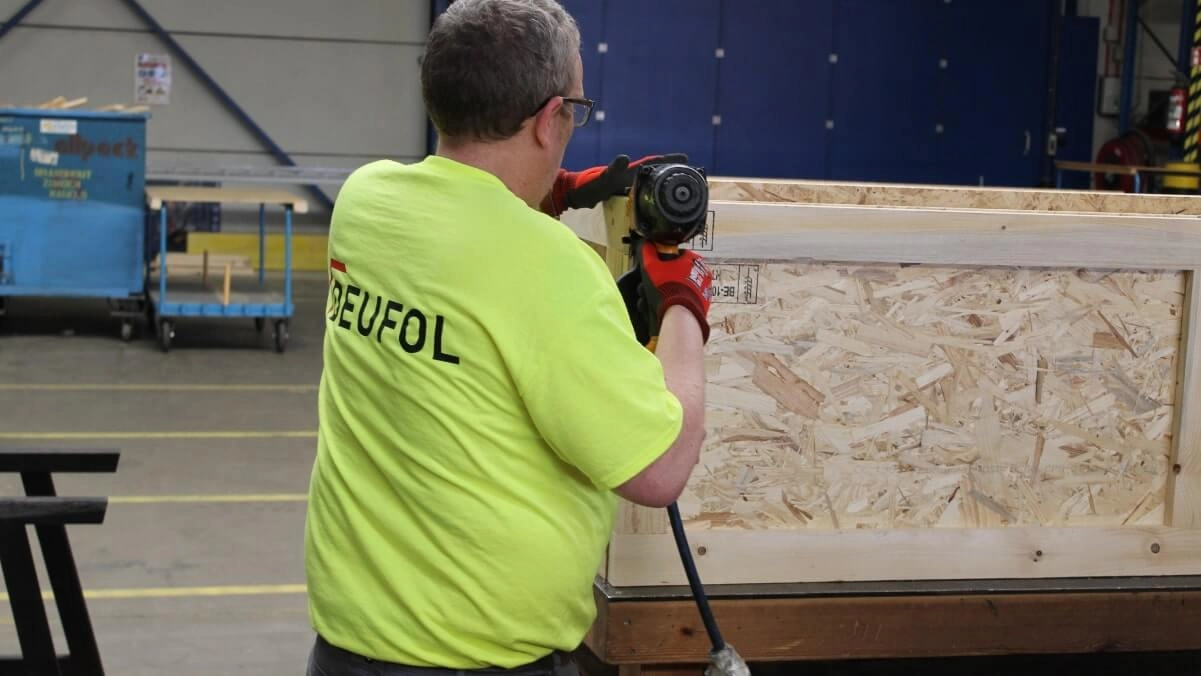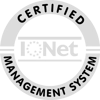The so-called ISPM 15 for wooden packaging plays a decisive role in the international trade of goods. Most wooden packaging is made of solid wood, which can be contaminated with wood pests. These pose a serious threat to forests. For this reason, wood packaging must be treated appropriately to avoid importing pests into other countries.
The Global IPPC Standard ISPM 15 applies to solid wood export packaging in many countries. A corresponding inspection and control for the application of the correct treatment of wood takes place through the respective national phytosanitary authorities as well as through the use of the ISPM stamp.
In this blog post, we will provide you with all the important information on the subject of ISPM 15 and at the same time inform you about our specially developed ConPLY packaging. Our ConPLY solutions are a real alternative for your export packaging.

What does the ISPM-15 standard mean?
ISPM 15 is the “International Standards for Phytosanitary Measures” and was adopted by the FAO (United Nations Food and Agriculture Organizations) in 2002 within the framework of the International Plant Protection Convention (IPPC).
These standards, described in ISPM No. 15, serve to harmonise the various import regulations in the different countries and describe the measures to reduce the import of wood pests through wood packaging material while at the same time preserving domestic forest stands. In order to protect the wood from possible pests, different methods of wood treatment can be applied according to ISPM No. 15.
The IPPC standard ISPM 15 applies throughout the EU and has been signed and implemented by more than 100 countries worldwide. These include the USA, Canada, China, Australia and many other countries. A complete list of countries is presented via the JKI (Julius Kühn-Institut).

What does the ISPM-15 standard include?
ISPM No. 15 applies to solid wood packaging with a wood thickness of more than 6 mm. These wooden packagings include pallets, boxes, drums, barrels and load carriers. Also subject to ISPM No. 15 is dunnage, which is used for cargo protection and usually consists of boards or beams. Excluded from ISPM No. 15 are wood-based materials with a wood thickness of less than 6 mm. These wood-based materials include chipboard, plywood or OSB and MDF boards. These have already been exposed to high heat and mechanically processed during manufacture, so that further heat treatment in accordance with ISPM 15 is no longer necessary.

Which treatment methods are permitted by ISPM 15?
In order to eliminate animal pests that may be present in the wood, packaging wood must be treated with an approved ISPM 15 process. Currently applicable treatment options according to ISPM No. 15 are:
- Heat treatment using a classical heat and drying chamber: This heat treatment of the solid wood must take place at a core temperature of 56 °C and over a period of at least 30 min. With technical drying, mould growth can also be avoided.
- Heat treatment (microwave heating) by means of dielectric heat treatment: With this heat treatment, 60°C must be reached over the entire cross-section of the wood over a period of one minute.
- Treatment with methyl bromide: In the EU, fumigation with methyl bromide has not been permitted since 2010 for environmental and health reasons. However, the use of wood packaging that has already been treated by fumigation with methyl bromide and is marked accordingly is still permitted.
- Treatment according to IPPC with sulphuryl fluoride
After proper treatment of the wood has taken place, the wood packaging or dunnage is given an appropriate ISPM marking.
Which other treatment requirements are there
In 2009, a new version of ISPM 15 was issued, which additionally stipulates that packaging wood must be produced from debarked wood. In this context, bark adhesions that could not be completely removed by mechanical debarking are permissible. Here, if the dimension is less than 3 cm in width, any length of bark applies. In the case of a dimension of more than 3 cm in width, the total area of the bark pieces may not exceed 50 cm².

What does an ISPM-15 mark indicate?
The ISPM 15 marking indicates that the packaging wood has been treated in accordance with the IPPC standard ISPM No. 15.
What does the ISPM marking indicate?
IPPC – Symbol: Symbol defined according to IPPC standard ISPM No. 15. The symbol is always on the left.
Country code: ISO code for Germany = DE
Producer/handler code: Uniform code or register number assigned to the company that produced or treated the wood.
Treatment code: This is the IPPC abbreviation for the type of treatment method. This must be on a separate line or separated from the other information by a line.

What should be kept in mind for ISPM marking?
The marking must be presented in accordance with ISPM 15 as follows:
- The marking must be permanently and legibly affixed to the packaging on two opposite sides
- Size, font and placement is variable
- Marking by hand is not permitted
- The colours red and orange must not be used, as these are used to mark dangerous goods

ISPM No. 15 for the international protection of forest resources
To protect native forests, many countries have corresponding quarantine regulations to prevent the importation of wood pests. In Germany, these regulations were enacted via the Plant Inspection Ordinance in order to create uniform regulations in global trade that stop or at least prevent the spread of harmful organisms.
The introduction of the IPPC Standard ISPM No. 15 in 2002 serves to standardise import regulations in international trade and trade in goods. This increases the health quality of wood packaging and the security against the introduction of pests in the domestic forest. ISPM No. 15 is now considered a legal requirement in many countries and non-compliance can lead to refusal or return of the goods, which in turn results in increased work and time as well as additional costs.
It therefore makes sense in any case to initiate the necessary preparatory measures in advance and, if necessary, to contact an expert for the professional handling of your wooden packaging.

Wooden packaging from DEUFOL
DEUFOL is your professional contact for wooden packaging and specialises in the worldwide transport of goods. For this purpose, we are available to our customers with our extensive know-how and support you in finding the right wooden packaging for your products. In doing so, we always adhere to the necessary guidelines and are very familiar with the treatment requirements of ISPM No. 15.
Our custom-fit wooden packaging
We provide you with wooden packaging that is optimally tailored to the needs of your products and subject to the highest production standards.
Our transport pallets
We provide you with transport pallets and load carriers that meet the requirements of the transport route and are subject to the ISPM standard if the wood is more than 6 mm thick.
Our wooden transport boxes
We also provide you with transport boxes made of wood, which bring your goods safely to their destination and whose treatment requirements comply with the ISPM-15 standard.

DEUFOL - your specialist for wooden packaging with a difference
With our 40 years of experience and our claim to recognise the trends of the time, we have looked for a corresponding risk reduction for our customers in wood processing. DEUFOL-ConPLY is a product that does not have to comply with the regulations of the ISPM No. 15 standard, as it is exempt from this with a wood thickness of less than six millimetres. With this innovative solution you avoid potential delays and inspections, saving a lot of time and avoiding unnecessary costs.
The DEUFOL ConPLY packaging for your products has been developed specifically for the export of your goods. This packaging material consists of laminated wood, which is not classified as solid wood. This means that the packaging is not subject to the ISPM-15 guidelines and the risk of being rejected by the customs authorities is minimised.

Contact us now for a personal consultation
Do you need more information about ISPM-15 or are you interested in one of our custom-fit solutions? We will provide you with our experienced experts who will advise you on our wooden packaging and provide you with all the important information. We will be pleased to present you our entire range of services and submit you an individual offer.
Just give us a call or feel free to use our contact form or e-mail address outside of our business hours.




